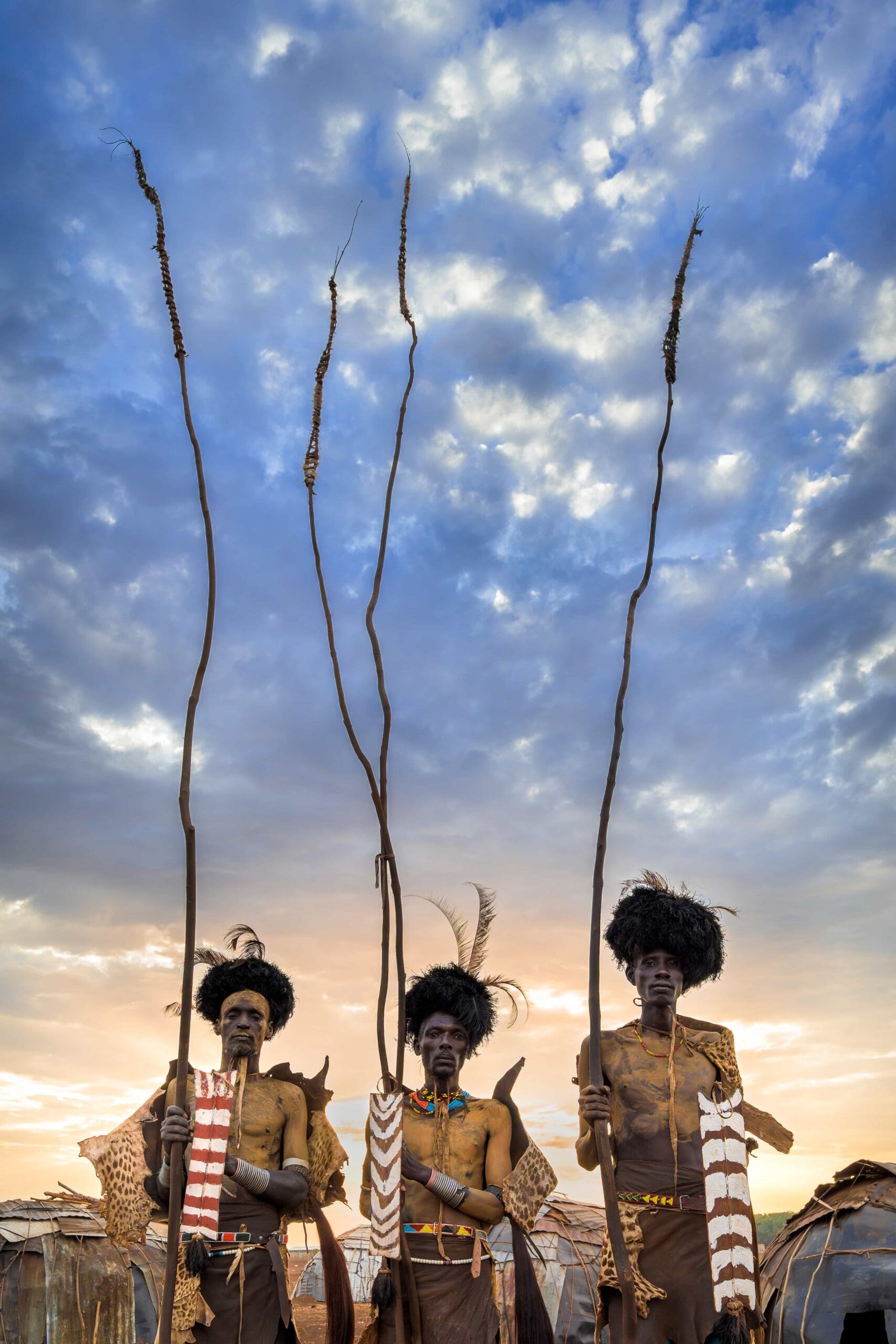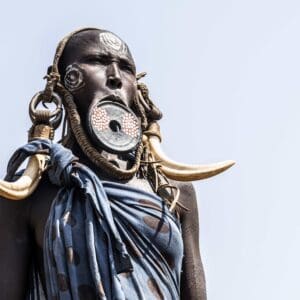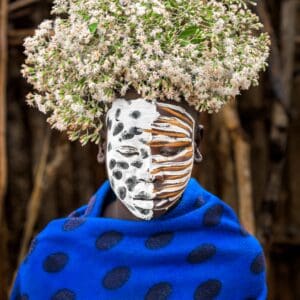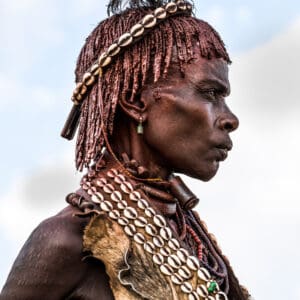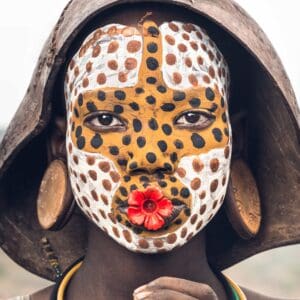A Time For Knives
Price range: $65.00 through $2,245.00
We left camp in the pitch black, our Land Cruiser cutting through the darkness of the Omo Valley. You have to be hyper-alert out here before dawn; the roads belong to wildlife and locals moving on foot, and shadows can be deceiving. We were driving toward the very edge of the map to find the Dassanech tribe—honestly, we were so close to the border, I wasn’t sure if we were in Ethiopia or Kenya.
By sunrise, the air was already vibrating with the sounds of the Dimi ceremony. It’s a powerful, rhythmic celebration marking a girl’s transition to womanhood. The elders call this history the “Time for Knives.” While they say the practice of circumcision has ended for girls, standing there, it’s hard to know where tradition ends and the modern world begins.
The men you see here carry an unmistakable regality. Wrapped in leopard skins and crowned with black ostrich feathers, all symbols of bravery. They hold clay-covered sticks that tether them to their spirituality. Watching them, it felt like time stood still, preserving a way of life that refuses to fade.
Limited Edition pieces are printed on archival museum-grade, archival rag paper or premium museum canvas, using long-lasting pigment inks. The Collection items are shipped as print-only. If you opt for the museum paper, your new photographic artwork will be bordered by a 1.5-inch white margin, which will be signed, titled, embossed, and numbered…
Read more
Additional information
| Size | 8"x12", 12"x18", 24"x36", 30"x45", 32"x48", 36”x54" |
|---|---|
| Paper | Museum Quality Paper, Professional Photo Paper, Museum Canvas |
| Edition | Initialed Open Edition, Signed Limited Edition |
